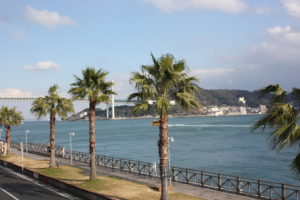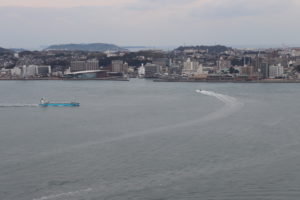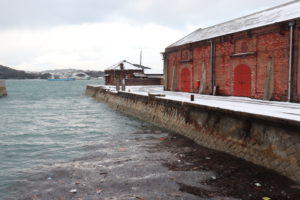Nakamachi Church
This Tourist information is created by Japan KYUSHU Tourist for your journey.
When you have an idea or a plan for traveling in Kyushu, Japan, please contact us
by sending an Enquiry. Make an Enquiry
Nakamachi Church is located near JR Nagasaki Station which was constructed
for Japanese Christians in 1986.
The church was dedicated to the 16 Saints of Nagasaki (St. Thomas and the 15 Martyrs)
in 1988, and the monument honoring them was erected in the premise.
The 16 Saints were martyred in Nagasaki from 1633 to 1637.
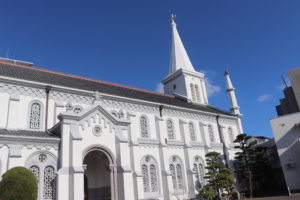 |
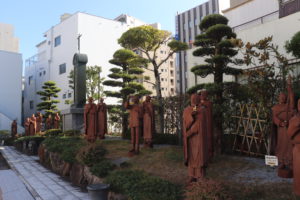 |
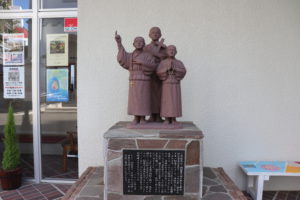 |
The 16 martyrs became Saints in 1987, since 26 Saint.
Dominic Ibáñez de Erquicia Pérez de Lete, Spanish, 1633, Dominican Priest
Antonio Gonzalez, Spanish, 1637, Dominican Priest
Jordan Ansalone, Italian, 1634, Dominican Priest
Luke of the Holy Spirit Alonso Gorda, Spanish, 1633, Dominican Priest
Michael de Aozaraza, Spanish, 1637, Dominican Priest
Guillaume Courtet, French, 1637, Dominican Priest
Jacobo Kyushei Gorōbyōe Tomonaga de Santa María, Japanese, 1633, Dominican Priest
Thomas Rokuzayemon Nishi, Japanese, 1634, Dominican Priest
Vincent Shiwozuka, Japanese, 1637, Dominican Priest
Francis Shōyemon, Japanese, 1633
Matthew Kohioye, Japanese, 1633
Lorenzo Ruiz, Filipino, 1637
Marina of Omura, Japanese, 1634
Magdalene of Nagasaki, Japanese, 1634
Michael Kurobioye, Japanese, 1633
Lazarus of Kyoto, Japanese, 1637
Saint Kolbe Memorial Museum, at Hongouchi Church
This Tourist information is created by Japan KYUSHU Tourist for your journey.
When you have an idea or a plan for traveling in Kyushu, Japan, please contact us
by sending an Enquiry. Make an Enquiry
Father Maximilian Kolbe was born in Poland in 1894 and was a priest of the Conventual
Order of St. Francis.
He had been active in promoting the veneration of the Immaculate Virgin Mary.
He came to Japan in 1930 and began educating seminarians and publishing a monthly
magazine ” the veneration of the Immaculate Virgin Mary.”
After that, the number of Japanese people who understood God’s teachings increased,
and Hongouchi Church was established in 1931.
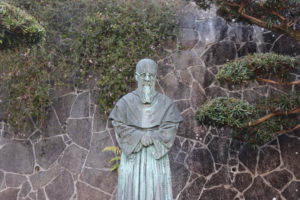 |
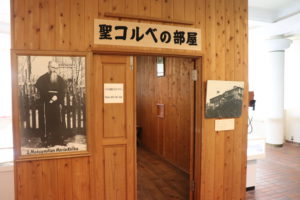 |
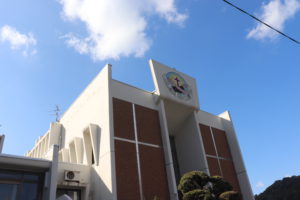 |
After six years in Japan, he returned to Poland for health reasons.
And then, he volunteered to die in place of a man named Franciszek Gajowniczek in the
German death camp of Auschwitz, located in German-occupied Poland.
Saint Kolbe Memorial Museum was built to commemorate his canonization in 1986.
Hokohara martyrdom place in Omura
This is a place related to the Kori-kuzure incident in Omura in 1657 in which
a large number of hidden Christians were arrested.
As many as 608 Christians were arrested, making it a rare and major incident
in the history of Christian oppression.
411 Christians were beheaded, and 131 of them were martyred at Hokohara
martyrdom place.
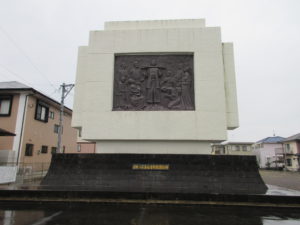 |
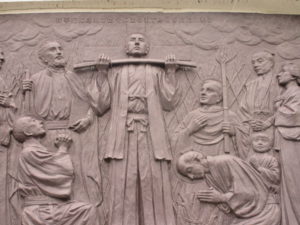 |
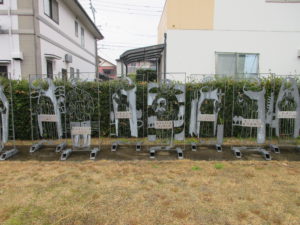 |
As a result of this incident, the Omura domain began implementing even stricter
policies prohibiting Christianity.
The believers have erected the monument to commemorate the martyrdom
at this location.
Home Our Services Tailor-made guided tour Christian Pilgrimage tour Golf tour
Kyushu Travel Guide Kyushu Photo Collection Off the beaten path What our Customers have to say
Ban on Christianity
The number of Christians in Japan continued to increase, and reaching 300,000 in 1614.
Fearing the ever-increasing number of Christian rebellions, Tokugawa Shogunate finally
issued a ban on Christianity in Nagasaki in 1612, and two years later in 1614 throughout
the country in Japan.
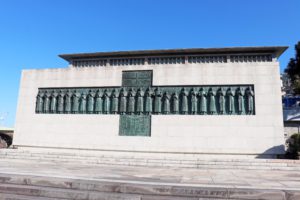 |
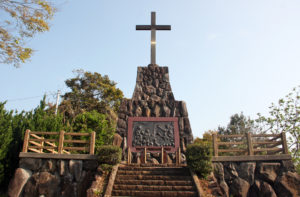 |
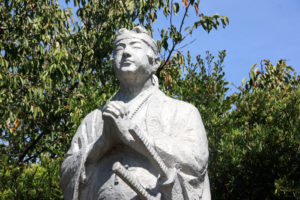 |
After that, the history of martyrdom began in various places.
・in 1617, 4 missionaries were martyred in Omura
・in 1622, Genna great martyrdom (55 Christians) at Nishizaka
・in 1622-24, Ikutsuki and Nakae-no-shima island martyrdom
・from 1627, Unzen jigoku martyrdom
・1633, Nakaura Julian martyred in Nishizaka
・in 1637, Shimabara Rebellion
・in 1644, Konishi Manjo martyrdom, Domestic priests become absent
・in 1657, Persecution of Christians in Omura
・in 1790, Persecution of Christians in Urakami
・in 1839, Persecution of Christians in Urakami
・in 1856, Persecution of Christians in Urakami
Home Our Services Tailor-made guided tour Christian Pilgrimage tour Golf tour
Kyushu Travel Guide Kyushu Photo Collection Off the beaten path What our Customers have to say
Saint Filippo de Jesus Church ( Japan 26 Saints Memorial Church )
This is a church with Gaudi-style twin tower designed by Kenjiro Imai,
built next to the Nishizaka Martyrdom site
When there was a plan to build a memorial hall for the 26 Japanese Saints
next to Nishizaka Martyrdon site, a large donation was made from Mexico,
and the Church was built in 1962.
This church is dedicated to Mexican Filippo de Jesus, who is one of the 26 Saints.
Filippo de Jesus was a Franciscan Catholic missionary who became one of the
26 Martyrs of Japan, the first Mexican Saint.
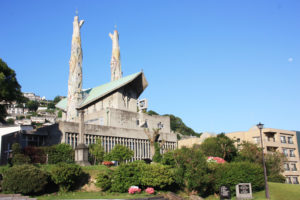 |
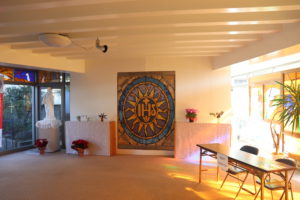 |
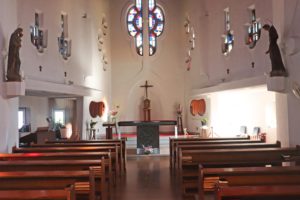 |
Map of Nagasaki
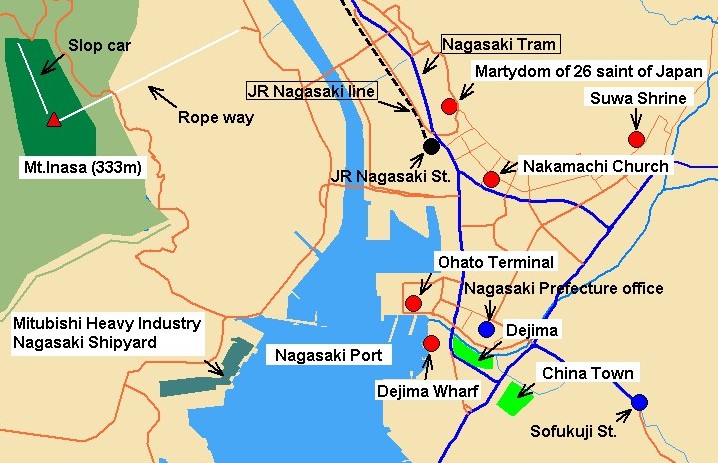
Home Our Services Tailor-made guided tour Christian Pilgrimage tour Golf tour
Kyushu Travel Guide Kyushu Photo Collection Off the beaten path What our Customers have to say
History of Japanese Christianity
Christian history in Japan was started when St. Francis Xavier came to Japan as a first Christian
missionary in 1549. Then Christianity was spread in Nagasaki region. However, unparalleled
hidden Cristian history was started from when Toyotomi Hideyoshi Shogunate proclaimed Christian
ban in 1587. During ban on Christianity, people secretly continued to faith while surviving in the
midst of the conventional society and Japanese religions.
Since ban on the Christianity was lifted in 1873, new Christian history in Japan has begun.
1549 St. Francis Xavier came Kagoshima Japan as a first Christian missionary and
commenced the Christian history in Japan
1550 St. Francis Xavier came Hirado as a Christian missionary
1551 Catholic Hirado Church was constructed as first church in Japan
1557 Introduction of Catholicism to Ikitsuki, Kasuga in Hirado
1563 Omura Sumitada, feudral lord of Nagasaki who was first lord convert to Christianity
1569 Todos os Santos Church was constructed as first in Nagasaki by Gaspal Villera
1571 Nagasaki Port was opend to Portugal by feudral lord Omura Sumitada
1580 Arima Harunobu, lord of Arima convert to Christianity and the Seminario was
established in Kuchinotsu as first in Japan
1582 Arima Harunobu teamed up with Kyushu Christian lords Otomo Sorin and ura Sumitada
to dispatch the Tensho Mission to the Pope in Rome
1587 Shogunate, Toyotomi Hideyoshi proclaimed Christian ban
1590 The Tensho Mission retured to Nagasaki
1597 The Twenty-Six Martyrs of Japan, were a group of Catholics who were
executed by crucifixion on February 5 at Nagasaki. Their martyrdom is especially
significant in the history of the Catholic Church in Japan.
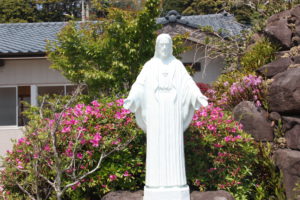 |
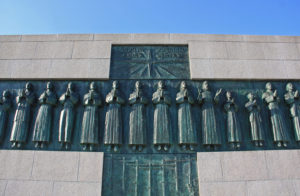 |
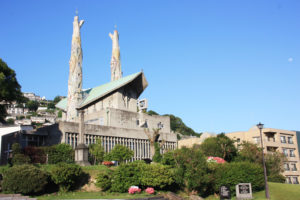 |
1603 Tokugawa Shogunate was established and the natioal isolation policy was applied
1614 The Tokugawa Shogunate prohibited Christianity throughout Japan
1622 five Christians were martyred at Nakae no Shima in Hirado
1624 three Christians were martyred at Nakae no Shima in Hirado
1627 twenty seven Christians were martyred at Unzen Jigoku
1637 Shimabara Rebellion : a peasant uprising against bakufu’s persecution of Christians
under the leadership of Amakusa Shiro
1637 Lorenzo Luiz from Philippines martyred at Nashizaka hill in Nagasaki
1641 Dejima, the small artificial island was opened as Dutch trading port in Nagasaki
1644 Last Christian missionary in Japan is martyred
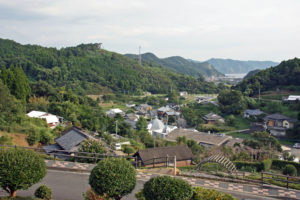 |
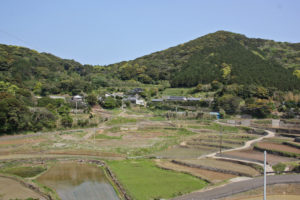 |
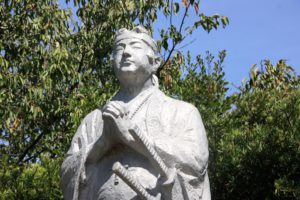 |
1853 Mathew C Perry came to Uraga; the Commodore of the US navy, who played a
significant role in Japanese history, succeeded in opening Japan to foreign countries
1854 Treaty between the USA and Japan : ending the isolation policy and opening the country
1858 Treaty of Amity and Commerce between USA, Netherlands, Russia, England, France and
Japan ; allow religious freedom in foreign residential areas
1862 The 26 Japanese Martyrs at Nishizaka Hill in Nagasaki were canonized by Pope Pius IX.
1865 Oura Cathedral was built as the basilica of Martyrdom of the 26 Saints of Japan
1868 Meiji Restoration, the most important event in Japanese history, which heralded a new era
of modernization in Japan. This revolution restored the imperial rule to Japan after more
than 250years of Tokugawa Shogunate
1873 Ban on the Christianity was lifted
1882 Shitsu Church in Sotome construction started by Father de Rotz’s design
1909 Shitsu Church was completed
1914 Urakami Cathedral construction was completed, it was the largest Catholic church in East Asia
at that time
1912 Yamada Church in Hirado was constructed
1917 Tabira Church in Hirado was constructed
1920 Kurosaki Church was completed by Father de Rotz’s design
1931 St. Francis Xavier Memorial Church in Hirado was constructed at the present location
1945 Atomic bomb dropped in Nagasaki on Aug. 9
The most part of Nagasaki was destroyed, and a tremendous number of lives were lost.
and Urakami Cathedral was completely destroyed.
About 73,000 died instantly, and up to 60,000 were injured.
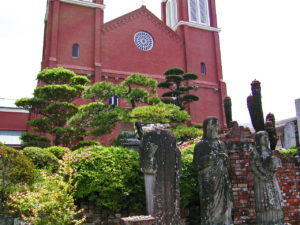 |
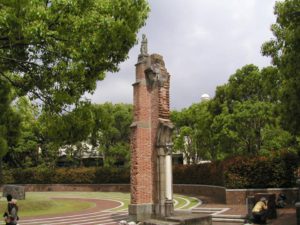 |
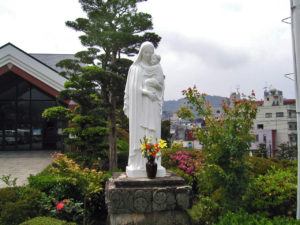 |
1950 Pope Pius XII designated the Nishizaka Hill in Nagasaaki of Martyrdom of 26 Japanese
Saints as an official Pilgrimage site for Catholics
1959 Urakami Cathedral replacement was built
1981 Pope John Paul II visited in Nagasaki
1982 Saint Teresa of Calcutta commonly known as Mother Teresa visited in Nagasaki
1987 Saint Lorenzo Ruiz was canonized by the same pope in the Vatican city on 18 October,
making him the first Filipino Saint
2000 Ebdo Shusaku ( novelist of Silence ) Literary Museum is opened in Sotome
2018 Hidden Christian site is registered on UNESCO’s World Heritage
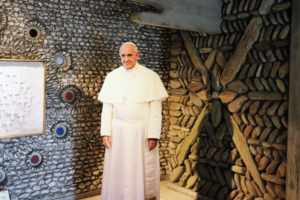 |
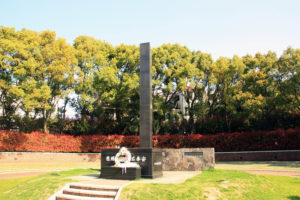 |
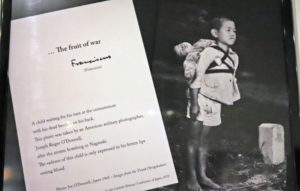 |
2019 Pope Francis visited Nagasaki on Nov.24 and and calls for a ‘world without Nuclear
Weapons’ at the Ground Zero.
Home Our Services Tailor-made guided tour Christian Pilgrimage tour Golf tour
Kyushu Travel Guide Kyushu Photo Collection Off the beaten path What our Customers have to say
Ban on Christianity in 1614
The number of Christians in Japan continued to increase, and reaching 300,000 in 1614.
Fearing the ever-increasing number of Christian rebellions, Tokugawa Shogunate finally
issued a ban on Christianity in Nagasaki in 1612, and two years later in 1614 throughout
the country in Japan.
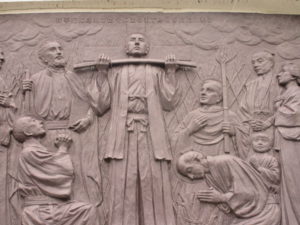 |
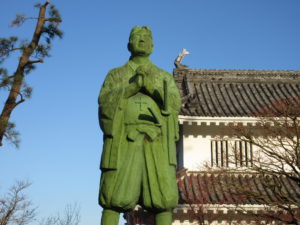 |
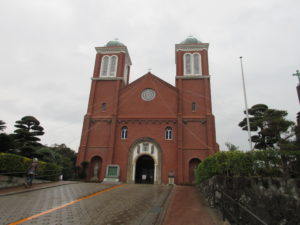 |
After that, the history of martyrdom began in various places.
・in 1617, 4 missionaries were martyred in Omura
・in 1622, Genna great martyrdom (55 Christians) at Nishizaka
・in 1622-24, Ikutsuki and Nakae-no-shima island martyrdom
・from 1627, Unzen jigoku martyrdom
・1633, Nakaura Julian martyred in Nishizaka
・in 1637, Shimabara Rebellion
・in 1644, Konishi Manjo martyrdom, Domestic priests become absent
・in 1657, Persecution of Christians in Omura
・in 1790, Persecution of Christians in Urakami
・in 1839, Persecution of Christians in Urakami
・in 1856, Persecution of Christians in Urakami
26 Saints Pilgrimage route on January 29 in 1597
The route of this day was from Akama in Munakata to Wajiro, the distance
was 21 km.
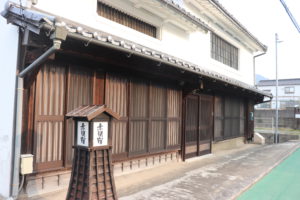 |
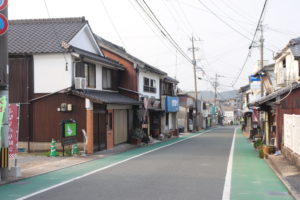 |
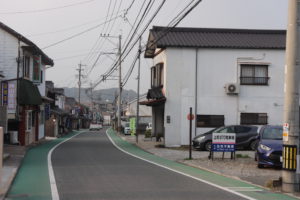 |
Started at Akama accommodation and using Karatsu walking road, they went to
Wajiro passing through Koga and Shingu.
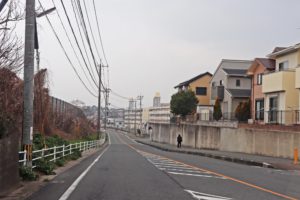 |
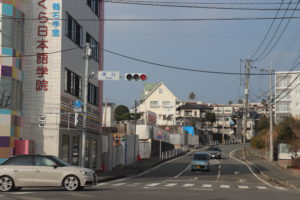 |
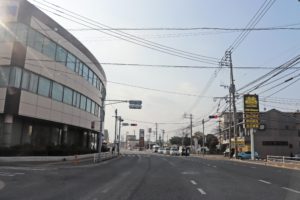 |
Accommodation was Wajiro where faced Hakata bay, in order to cross from
Saitozaki to Shikanoshima the next day.
26 Saints Pilgrimage route on January 28 in 1597
The route of this day was from Kokura in Kitakyushu to Akama in Munakata via Koyanose ,
the distance was 34.5 km.
Started at Kokura accommodation around Kokura Castle, and walked to Tobata port
along the Kanmon Strait.
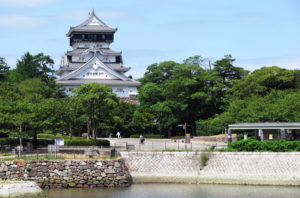 |
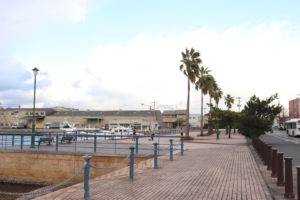 |
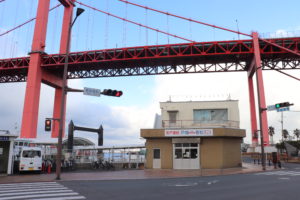 |
Transfered to Wakamatsu from Tobata by a boat.
 |
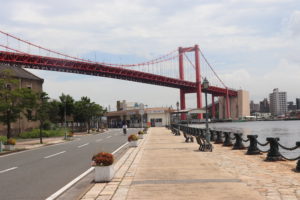 |
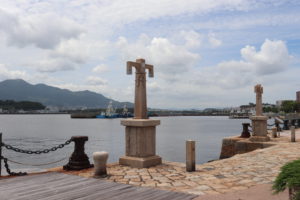 |
Walked to Akama through Ashiya and Koyanose, and then stayed at Akama.
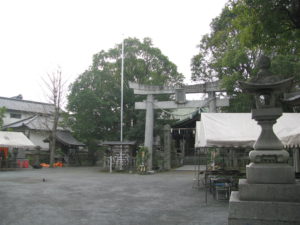 |
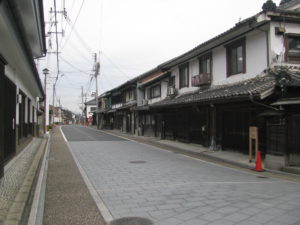 |
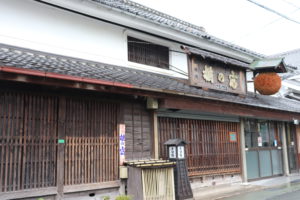 |
26 Saints Pilgrimage route on January 27 in 1597
There were 24 martyrs when they started Kyoto, but two more martyrs were added in
Shimonoseki, then became 26 martyrs in total.
The route of this day was from Karato in Shimonoseki to Kokura in Kitakyushu.
Rode on the boat at Karato, and transfer to Dairi in Kitakyushu
|
Karato |
Kanmon Strait |
Dairi |
They landed at Dairi and walked 6 km along the coastline of Kanmon Strait to Kokura,
where was the place to stay.
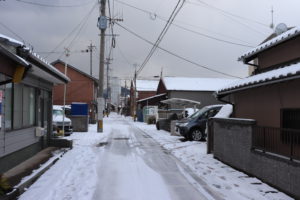 |
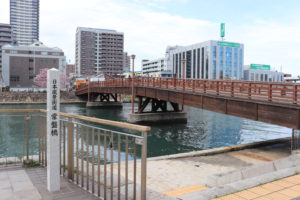 |
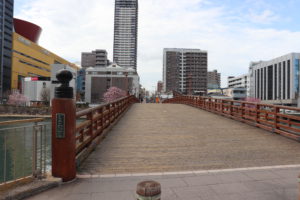 |
It is said that they stayed around Kokura Castle.
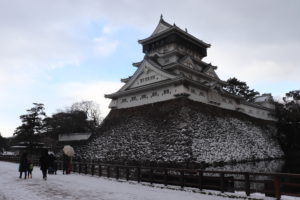 |
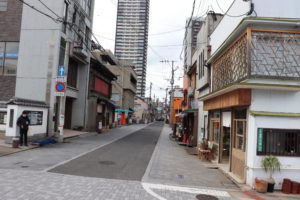 |
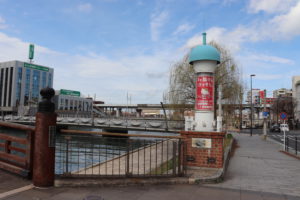 |

